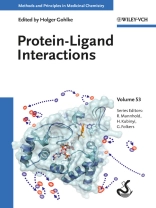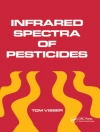Innovative and forward-looking, this volume focuses on recent achievements in this rapidly progressing field and looks at future potential for
development.
The first part provides a basic understanding of the factors governing protein-ligand interactions, followed by a comparison of key experimental methods (calorimetry, surface plasmon resonance, NMR) used in generating interaction data. The second half of the book is devoted to insilico methods of modeling and predicting molecular recognition and binding, ranging from first principles-based to approximate ones. Here,
as elsewhere in the book, emphasis is placed on novel approaches and recent improvements to established methods. The final part looks at
unresolved challenges, and the strategies to address them.
With the content relevant for all drug classes and therapeutic fields, this is an inspiring and often-consulted guide to the complexity of
protein-ligand interaction modeling and analysis for both novices and experts.
Mục lục
PREFACE
PART I: Binding Thermodynamics
STATISTICAL THERMODYNAMICS OF BINDING AND MOLECULAR RECOGNITION MODELS
Introductory Remarks
The Binding Constant and Free Energy
A Statistical Mechanical Treatment of Binding
Strategies for Calculating Binding Free Energies
SOME PRACTICAL RULES FOR THE THERMODYNAMIC OPTIMIZATION
OF DRUG CANDIDATES
Engineering Binding Contributions
Eliminating Unfavorable Enthalpy
Improving Binding Enthalpy
Improving Binding Affinity
Improving Selectivity
Thermodynamic Optimization Plot
ENTHALPY?ENTROPY COMPENSATION AS DEDUCED FROM MEASUREMENTS
OF TEMPERATURE DEPENDENCE
Introduction
The Current Status of Enthalpy?Entropy Compensation
Measurement of the Entropy and Enthalpy of Activation
An Example
The Compensation Temperature
Effect of High Correlation on Estimates of Entropy and Enthalpy
Evolutionary Considerations
Textbooks
PART II: Learning from Biophysical Experiments
INTERACTION KINETIC DATA GENERATED BY SURFACE PLASMON RESONANCE BIOSENSORS AND THE USE OF KINETIC RATE CONSTANTS IN LEAD GENERATION AND OPTIMIZATION
Background
SPR Biosensor Technology
From Interaction Models to Kinetic Rate Constants and Affinity
Affinity versus Kinetic Rate Constants for Evaluation of Interactions
From Models to Mechanisms
Structural Information
The Use of Kinetic Rate Constants in Lead Generation and Optimization
Designing Compounds with Optimal Properties
Conclusions
NMR METHODS FOR THE DETERMINATION OF PROTEIN?LIGAND INTERACTIONS
Experimental Parameters from NMR
Aspects of Protein?Ligand Interactions That Can Be Addressed by NMR
Ligand-Induced Conformational Changes of a Cyclic Nucleotide Binding Domain
Ligand Binding to GABARAP Binding Site and Affinity Mapping
Transient Binding of Peptide Ligands to Membrane Proteins
PART III: Modeling Protein?Ligand Interactions
POLARIZABLE FORCE FIELDS FOR SCORING PROTEIN?LIGAND INTERACTIONS
Introduction and Overview
AMOEBA Polarizable Potential Energy Model
AMOEBA Explicit Water Simulation Applications
Implicit Solvent Calculation Using AMOEBA Polarizable Force Field
Conclusions and Future Directions
QUANTUM MECHANICS IN STRUCTURE-BASED LIGAND DESIGN
Introduction
Three MM-Based Methods
QM-Based Force Fields
QM Calculations of Ligand Binding Sites
QM/MM Calculations
QM Calculations of Entire Proteins
Concluding Remarks
HYDROPHOBIC ASSOCIATION AND VOLUME-CONFINED WATER MOLECULES
Introduction
Water as a Whole in Hydrophobic Association
Confined Water Molecules in Protein?Ligand Binding
IMPLICIT SOLVENT MODELS AND ELECTROSTATICS IN MOLECULAR RECOGNITION
Introduction
Poisson?Boltzmann Methods
The Generalized Born Model
Reference Interaction Site Model of Molecular Solvation
Applications
LIGAND AND RECEPTOR CONFORMATIONAL ENERGIES
The Treatment of Ligand and Receptor Conformational Energy in Various Theoretical Formulations of Binding
Computational Results on Ligand Conformational Energy
Computational Results on Receptor Conformational Energy
Concluding Remarks
FREE ENERGY CALCULATIONS IN DRUG LEAD OPTIMIZATION
Modern Drug Design
Free Energy Calculations
Example Protocols and Applications
Discussion
SCORING FUNCTIONS FOR PROTEIN?LIGAND INTERACTIONS
Introduction
Scoring Protein?Ligand Interactions: What for and How to?
Application of Scoring Functions: What Is Possible and What Is Not?
Thermodynamic Contributions and Intermolecular Interactions: Which Are Accounted for and Which Are Not?
Conclusions or What Remains to be Done and What Can be Expected?
PART IV: Challenges in Molecular Recognition
DRUGGABILITY PREDICTION
Introduction
Druggability: Ligand Properties
Druggability: Ligand Binding
Druggability Prediction by Protein Class
Druggability Predictions: Experimental Methods
Druggability Predictions: Computational Methods
A Test Case: PTP1B
Outlook and Concluding Remarks
EMBRACING PROTEIN PLASTICITY IN LIGAND DOCKING
Introduction
Docking by Sampling Internal Coordinates
Fast Docking to Multiple Receptor Conformations
Single Receptor Conformation
Multiple Receptor Conformations
Improving Poor Homology Models of the Binding Pocket
State of the Art: GPCR Dock 2010 Modeling and Docking Assessment
Conclusions and Outlook
PROSPECTS OF MODULATING PROTEIN?PROTEIN INTERACTIONS
Introduction
Thermodynamics of Protein?Protein Interactions
CADD Methods for the Identification and Optimization of Small-Molecule Inhibitors of PPIs
Examples of CADD Applied to PPIs
Summary
Giới thiệu về tác giả
Holger Gohlke is Professor of Pharmaceutical and Medicinal Chemistry at the Heinrich-Heine-University, Dusseldorf, Germany. He obtained his diploma in chemistry from the Technical University of Darmstadt and his Ph D from Philipps-University, Marburg, working with Gerhard Klebe, where he developed the Drug Score and AFMo C approaches. He then did postdoctoral research at The Scripps Research Institute, La Jolla, USA, working with David Case on developing and evaluating computational biophysical methods to predict protein-protein interactions. After appointments as Assistant Professor at Goethe University Frankfurt and Professor at Christian-Albrechts-University, Kiel, he moved to Dusseldorf in 2009.
He was awarded the ‘Innovationspreis in Medizinischer und Pharmazeutischer Chemie’ from the Gesellschaft Deutscher Chemiker and the Deutsche Pharmazeutische Gesellschaft, and the Hansch Award of the Cheminformatics and QSAR Society.
His current research focuses on the understanding, prediction, and modulation of interactions involving biological macromolecules from a theoretical perspective. His group applies and develops techniques grounded in bioinformatics, computational biology, and computational biophysics.












